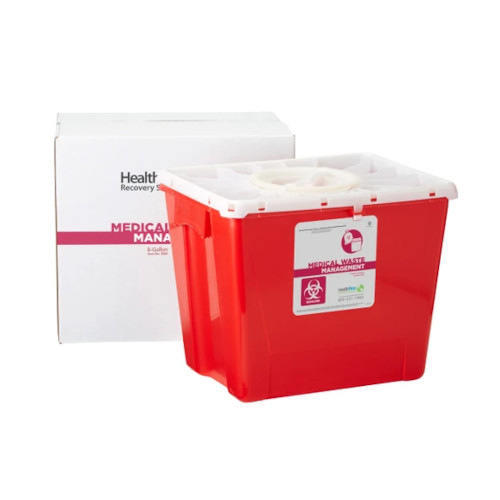Discovering Various Garbage Disposal Options for a Cleanser Environment
In the quest of a cleaner atmosphere, the administration of waste disposal has arised as an important focal factor for sustainable growth. With a wide variety of waste disposal alternatives offered, ranging from conventional landfill methods to ingenious waste-to-energy innovations, the option of how we handle our waste has significant effects for our world's wellness. By analyzing the various techniques and strategies used in recycling, composting, incineration, garbage dump administration, and waste-to-energy procedures, a deeper understanding of their impacts and performance can be gotten. The mission for optimal waste disposal approaches that focus on environmental conservation while fulfilling the requirements of a growing populace stays a pressing issue in today's world.
Recycling Approaches
Applying efficient recycling methods is crucial in lessening waste and advertising sustainability in our environment. Recycling includes the procedure of transforming waste products into recyclable items to protect against unneeded disposal.
Another essential recycling approach is composting, which entails decomposing organic waste like food scraps and yard trimmings right into nutrient-rich dirt. This procedure not just draws away natural waste from land fills however also generates a beneficial source for horticulture and farming. In addition, upcycling is an imaginative recycling approach that involves changing old or thrown out products right into items of higher high quality or worth. By including these different recycling methods into our waste administration methods, we can significantly reduce our ecological impact and relocate towards a much more sustainable future.

Composting Methods
Reliable waste management methods, such as reusing methods, lead the means for a cleaner environment, and now, changing the focus to 'Composting Techniques', we discover sustainable methods to decay organic waste for ecological advantage. medical waste removal service.
Composting is an all-natural procedure that transforms natural waste, like food scraps and yard trimmings, into a nutrient-rich soil change. The trick to successful composting exists in producing the right balance of eco-friendly materials, such as fruit and veggie scraps, and brown materials, like dried leaves and twigs. These materials disintegrate with the aid of bacteria, damaging down the waste right into valuable compost.
There are various composting techniques available to suit different needs. Conventional backyard composting involves layering natural products in a container or heap and frequently transforming the mix to freshen it. Vermicomposting, on the other hand, utilizes worms to break down organic issue right into garden compost (click here). For those with limited space, interior composting systems give a convenient solution. By utilizing composting techniques, we can reduce the amount of waste sent to land fills while producing an advantageous item for improving dirt and supporting plant growth.
Incineration Advantages And Disadvantages
Incineration, as a waste disposal technique, offers both advantages and downsides that merit cautious factor to consider in the realm of sustainable waste monitoring practices. On the favorable side, incineration can substantially lower the volume of waste, lessening the demand for landfill space and possibly lowering greenhouse gas emissions.
However, there are significant downsides to incineration. One significant problem is the potential release of unsafe pollutants into the air, such as dioxins, hefty steels, and particulate matter, which can have negative results on human site here health and the environment. Furthermore, the high preliminary financial investment and functional costs of incineration facilities position economic difficulties, making it a less cost-efficient option compared to other waste management techniques. Cautious tracking and law are vital to mitigate these adverse impacts and make the most of the advantages of incineration as part of an extensive waste administration method.
Land Fill Administration Approaches
Land fills play a crucial role in waste management and environmental conservation by giving a control system for the disposal of strong waste products. Efficient garbage dump management strategies are vital to reduce environmental impacts and ensure the lasting sustainability of these garbage disposal websites. One crucial method is appropriate waste compaction to maximize the use of readily available room within the garbage dump (click here). By compacting the waste, the quantity is reduced, enabling for more waste to be accommodated over time.
Furthermore, the application of everyday cover practices is essential in lessening odors, avoiding clutter, and decreasing the tourist attraction of insects. Covering the disposed waste at the end of daily helps to have smells and stop possible environmental contamination. Additionally, the tracking of land fill gas discharges and leachate degrees is important in ensuring that environmental requirements are satisfied which any type of possible risks to surrounding environments are minimized.

Waste-to-Energy Technologies
Among the innovative approaches to waste management involves taking advantage of Waste-to-Energy innovations to transform solid waste into functional power sources. Waste-to-Energy (WtE) modern technologies include a variety of processes that aim to remove energy from waste materials with thermal, chemical, or biological means. This conversion process not just lowers the quantity of waste that finishes up in garbage dumps but also generates useful power resources such as electrical energy, warm, or biofuels.
Incineration includes burning waste at high temperature levels to generate warmth and electrical power. Gasification transforms waste into a syngas, which can be made use of for power generation or chemical production.
Implementing Waste-to-Energy modern technologies can help alleviate environmental concerns associated with typical waste disposal approaches while at the same time providing a renewable resource source. Careful consideration has to be given to discharges control and making certain the sustainability of feedstock materials for these modern technologies to be absolutely beneficial for a cleaner setting.

Conclusion
In conclusion, checking out different garbage disposal alternatives such as reusing, composting, incineration, land fill monitoring, and waste-to-energy technologies is necessary for advertising a cleaner setting - click here. Each technique has its very own advantages and difficulties, yet by making use of a mix of these approaches, we can work towards decreasing the quantity of waste that winds up in land fills and inevitably add to an extra lasting future for generations ahead
With a multitude of waste disposal choices available, ranging from conventional garbage dump techniques to cutting-edge waste-to-energy technologies, the option of how we handle our waste has significant implications for our planet's well-being. medical waste disposal.Incineration, as a waste disposal approach, offers both benefits and negative aspects that warrant cautious consideration in the realm of sustainable waste monitoring techniques.Land fills play a critical role in waste monitoring and ecological preservation by offering a containment system for the disposal of strong waste materials. By condensing the waste, the volume is minimized, allowing for more waste to be fit over time
One of the cutting-edge methods to waste management includes utilizing Waste-to-Energy innovations to transform strong waste into useful energy resources.